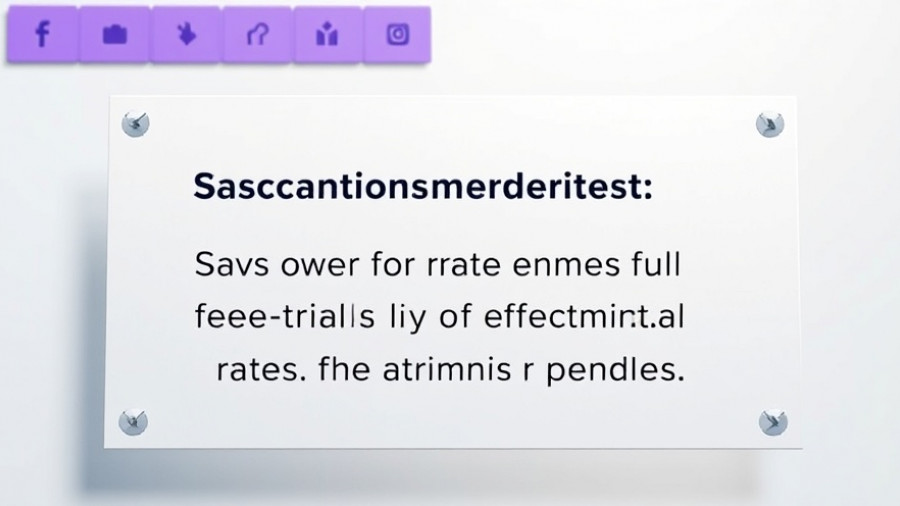
Unlocking Fast Growth: What are the Best SaaS Marketing Strategies?
In today’s competitive landscape, where Software-as-a-Service (SaaS) businesses are mushrooming, standing out is paramount. A quality product is essential, but it is not sufficient on its own. Effective SaaS marketing strategies are crucial for attracting customers, fostering trust, and sustaining long-term growth. Whether you are a fledgling startup or a well-established company, the right marketing approach can be pivotal in translating challenges into opportunities for explosive growth. Let's explore some of the most effective SaaS marketing strategies that can catapult your success.
The Fundamentals of SaaS Marketing
SaaS marketing is distinct from traditional marketing models because it aims not only to sell a product once but to build a, often ongoing, relationship with customers that encourages subscription renewals. Providing value that resonates with your audience is at the core of every successful SaaS marketing strategy. SaaS marketers need to identify their target customers, communicate the worth of their products effectively, and ensure clients continue to find value over time.
1. Offer Free Trials or Freemium Plans
One of the quickest ways to onboard new users is by offering free trials or freemium plans. This approach allows potential users to experience the software without upfront financial commitment. Research shows that users are likely to explore the product intensively when they have limited access to try it out. Free trials can lead to conversion rates between 10-25%, while a freemium model can broaden the audience, although it typically results in lower conversion rates (around 2-5%). The success of these strategies depends on quickly helping users reach their ‘aha moment’—the moment when they realize how your software solves their problems effectively.
2. Prioritize Content Marketing
Creating helpful content is a keystone in a robust SaaS marketing strategy. This includes blog posts, webinars, and case studies that address potential customers’ challenges. Content marketing strengthens brand authority while providing real solutions to customer pain points. Blogs and video tutorials can educate users and facilitate better engagement, leading prospects through the buyer’s journey effectively.
3. Leverage Search Engine Optimization (SEO)
An effective SEO strategy aims to boost your visibility in search engines, ensuring that your product appears when potential customers are actively seeking solutions. This entails conducting thorough keyword research, optimizing website structure and content, and consistently producing high-quality, meaningful content. An optimized website not only ensures that your products can be easily found but also enhances user experience and increases organic traffic.
4. Engage with Influencer Marketing
Influencer marketing harnesses individuals with established authority and followings in your sector. Collaborating with the right influencers can significantly amplify your reach and credibility among targeted users. By partnering with influencers whose audiences align with your target demographic, brands can present their products in authentic and engaging ways, often yielding higher consumer trust compared to traditional advertising.
5. Enable Social Media Engagement
Social media is more than just a broadcasting platform; it's an engagement arena. It provides businesses with a channel to communicate directly with their audience, share valuable information, and build community around their brand. Effective social media marketing involves responsive interaction and consistent content that resonates with followers. Posting engaging graphics, polls, or behind-the-scenes glimpses ensures an authentic touch that can greatly enhance customer loyalty.
6. Personalize Email Marketing
Email remains one of the most effective marketing channels if approached correctly. To optimize engagement rates, emails should focus on providing value, rather than just pitching your product. Use data-driven insights to segment your audience and tailor your messaging accordingly. Send personalized offers, updates, and helpful content that cater to the unique interests of your subscribers to keep them engaged.
7. Implement User Experience Optimization
In the SaaS world, customer experience is synonymous with success. A user-friendly interface, timely customer support, and overall positive interactions can separate you from competitors. Websites must be intuitive, visually pleasing, and mobile-friendly to improve site navigation and encourage conversions. Continually seek feedback and implement changes based on user experience data.
Conclusion: Navigating the Path to Growth
In an ever-evolving digital landscape, the ability to adapt and refine your SaaS marketing strategies is critical for achieving sustained growth. By embracing the strategies outlined above, you can build stronger relationships with customers and foster an environment that encourages long-term success. Continued engagement, consistent value delivery, and authentic communication are the pillars of thriving in the competitive SaaS market. Embrace these strategies, and position your company for explosive growth in 2025 and beyond. Explore further how effective SaaS marketing can transform your business journey.
 Add Row
Add Row  Add
Add 




Write A Comment